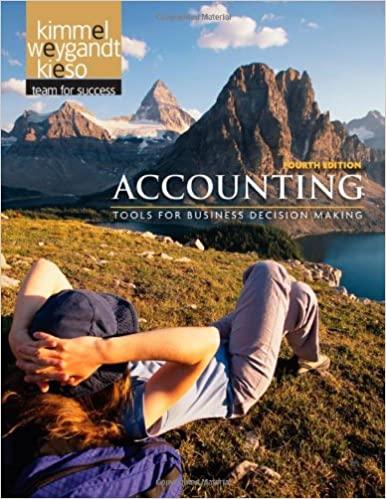This is a typical fixed-cost product mix model. The company must decide how much, if any, of each product to produce, where a fixed cost is charged for each product that is produced at a positive level. The problem is to maximize total profit, subject to the resource constraints and the maximum production constraints. Which of the following is true when comparing the model with fixed costs to the with no fixed costs? Note: When you run Solver for the fixed-cost model, make sure the Integer Optimality % is set to 0, to ensure that you find the optimal solution.
(Can you answer the questions with excel solver)  )
)
B D F G H M N P This is a typical fixed-cost product mix model. The company must decide how much, if any, of each product to produce, where a fixed cost is charged for each product that is produced at a positive level. The problem is to maximize total profit, subject to the resource constraints and the maximum production constraints. Which of the following is true when comparing the model with fixed costs to the with no fixed costs? Note: When you run Solver for the fixed-cost model, make sure the Integer Optimality % is set to O, to ensure that you find the optimal solution. 1 2 Click here to reference the data needed to answer the question. 3 a. In both models, all products produced at a positive level are produced at their maximum production levels. 4 4 b. Both models have exactly the same optimal production levels. 5 c. When there are no fixed costs, the optimal total profit is at least $6,000 larger than when there are fixed costs. 6 d. All of these choices are true. 7 Product mix model with fixed costs 8 9 Resources used per unit of product produced 10 Product 1 Product 2 Product 3 Product 4 Product 5 Product 6 Product 7 Product 8 11 Resource 1 2,0 2,5 2,3 2,0 2,2 2,5 2,4 2,8 12 Resource 2 2,0 2,9 2,5 2,9 2,1 2,5 2,6 2,5 13 Resource 3 2,2 2,1 2,3 2,4 2,3 2,0 2,9 2,6 14 Resource 4 2,8 2,4 2,4 2,7 2,1 2,0 2,2 2,5 15 16 Inputs on products 17 Unit revenue $25,30 $22,70 $22,50 $21,80 $27,30 $23,00 $20,70 $29,60 18 Unit variable cost $15,90 $16,00 $13,80 $12,90 $19,50 $17,50 $15,20 $21,90 19 Unit margin $9,40 $6,70 $ $8,70 $8,90 $7,80 $5,50 $5,50 $7,70 20 Fixed cost $1.800 $1.800 $1.600 $1.000 $1.100 $1.400 $1.700 $1.400 21 Maximum production 560 550 550 500 490 400 570 410 22 23 Decisions 24 Produce any? 25 26 Units produced 27 28 Effective capacity 29 30 Constraints on resources 31 Used Available 32 Resource 1 12500 3 Resource 2 6000 34 Resource 3 11000 35 Resource 4 5000 36 37 Monetary outputs 88 Total revenue 39 Total variable cost a0 Total fixed cost 1 Total profit 2 A AAAA B D F G H M N P This is a typical fixed-cost product mix model. The company must decide how much, if any, of each product to produce, where a fixed cost is charged for each product that is produced at a positive level. The problem is to maximize total profit, subject to the resource constraints and the maximum production constraints. Which of the following is true when comparing the model with fixed costs to the with no fixed costs? Note: When you run Solver for the fixed-cost model, make sure the Integer Optimality % is set to O, to ensure that you find the optimal solution. 1 2 Click here to reference the data needed to answer the question. 3 a. In both models, all products produced at a positive level are produced at their maximum production levels. 4 4 b. Both models have exactly the same optimal production levels. 5 c. When there are no fixed costs, the optimal total profit is at least $6,000 larger than when there are fixed costs. 6 d. All of these choices are true. 7 Product mix model with fixed costs 8 9 Resources used per unit of product produced 10 Product 1 Product 2 Product 3 Product 4 Product 5 Product 6 Product 7 Product 8 11 Resource 1 2,0 2,5 2,3 2,0 2,2 2,5 2,4 2,8 12 Resource 2 2,0 2,9 2,5 2,9 2,1 2,5 2,6 2,5 13 Resource 3 2,2 2,1 2,3 2,4 2,3 2,0 2,9 2,6 14 Resource 4 2,8 2,4 2,4 2,7 2,1 2,0 2,2 2,5 15 16 Inputs on products 17 Unit revenue $25,30 $22,70 $22,50 $21,80 $27,30 $23,00 $20,70 $29,60 18 Unit variable cost $15,90 $16,00 $13,80 $12,90 $19,50 $17,50 $15,20 $21,90 19 Unit margin $9,40 $6,70 $ $8,70 $8,90 $7,80 $5,50 $5,50 $7,70 20 Fixed cost $1.800 $1.800 $1.600 $1.000 $1.100 $1.400 $1.700 $1.400 21 Maximum production 560 550 550 500 490 400 570 410 22 23 Decisions 24 Produce any? 25 26 Units produced 27 28 Effective capacity 29 30 Constraints on resources 31 Used Available 32 Resource 1 12500 3 Resource 2 6000 34 Resource 3 11000 35 Resource 4 5000 36 37 Monetary outputs 88 Total revenue 39 Total variable cost a0 Total fixed cost 1 Total profit 2 A AAAA
 )
)





